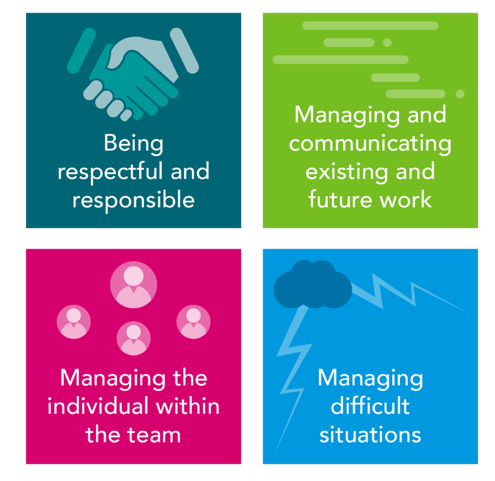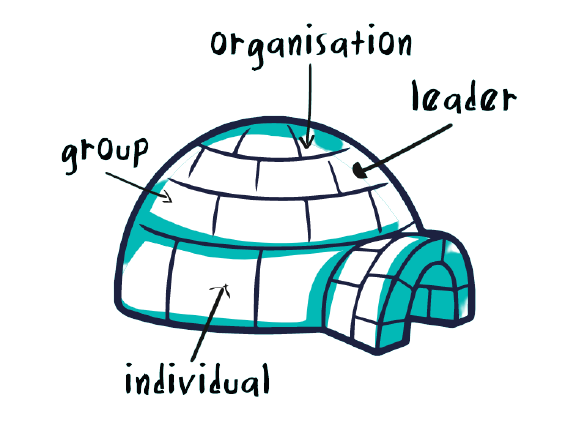
Stress busters: how to help employees help themselves
Dr. Rachel Lewis explores how empowering teams to co-create solutions can reduce workplace stress and boost wellbeing...
Company coffee shops, gyms, and organized meditation sessions at work may go some way to making some individual colleagues briefly feel more positive and more valued at work. But an emphasis solely on the individual misses the multi-faceted issues that contribute to good or poor mental health at work. A broader and deeper approach is needed to address the layers of issues and organizational interconnections that affect employees’ psychosocial welfare.
The main drivers of workplace stress which can lead to mental ill-health may include one or some of the following:
I will draw primarily on experiences and the regulatory environment of the United Kingdom, while also referencing examples of initiatives in other countries, although the interventions we at Affinity recommend are applicable across cultures and in most jurisdictions.
In the UK, health and safety at work is regulated by the Health and Safety Executive (HSE), a government department that was historically charged with promoting and regulating safe working practices and minimizing exposure to occupational health hazards. While legislation is clear that employers have an obligation to protect employees from all risks – both physical and psychological – the focus in practice has been on the management of physical hazards.
The HSE took a first step to clarify how organizations can protect mental well-being by identifying the common stress factors at work in the early 2000s, and developing a management system to help employers develop a psychologically safe environment. Over time it became clear that neither the moral argument nor regulatory pressure on organizations was moving the needle on promoting mental wellbeing at work. With clear evidence that investing in mental health and wellbeing makes good business sense, it is also becoming a board level priority.

The onset of mental ill-health in an employee can last for several months prior to any absence, which, for cases of stress, typically last longer than for injuries at work (UK data shows 19.6 days for a stress-related absence and 6.6 days for a workplace injury).
In Australia, stringent regulations exist on stress or mental ill-health in the workplace. Along with helpful advice, regulators also place responsibilities on the employer. Employers should also be proactive in addressing hostile behavior (including harassment and bullying) and, under occupational health and safety legislation, employers and employees are required to comply with any measures that promote health and safety in the workplace. Because of this duty, employers need to eliminate or reduce the risks to employees’ health and safety caused by workplace bullying.
Companies in the Netherlands typically see shorter periods of absence for mental health, partially because they are obliged to pay sick pay at 70% of the employee’s salary during the absence, so the return-to-work process is activated quickly.
In the UK, minimum statutory sick pay paid by employers is significantly lower than the employee’s normal salary, so there is less incentive for the employer to activate a comprehensive return-to-work program.
Typically, we find the cause and effect of workplace stress at five levels:
Organizationally, there are multiple triggers for employees and teams to become stressed and it’s worth taking time to include a mental health risk assessment when planning changes to workflows, business models and investments, or changes that may at first sight seem innocuous and a long way from impacting employees’ mental health.
Take the implementation of a change from one IT system to another. Leaders of multiple functions should together assess the potential for stress to be caused for teams outside the IT function if there are delays or interruptions to normal workflows. For example, how will this affect marketing colleagues’ ability to continue with product development or will the sales team maintain contact with customers and meet their targets for commission? Do the team leaders who may be affected have the ability to look after their teams during this period of change?
The same goes for more fundamental changes in business, like restructuring involving fundamental changes to working patterns, responsibilities, and redundancies. Is the stress this will probably cause included on the risk register for this activity? Are the mitigations in place, including training supervisors and managers to spot individuals with mental health issues, and do they have the resources to help?

“With 17.1 million days lost to stress-related absences in the UK in 2022/23, stress is the leading cause of absence in the workplace.”
Even in a ‘steady state,’ business is in a state of flux and the workplace constantly evolves. As we enter a post-COVID 2024, leaders face a plethora of challenges, including how and where people work, pressure on budgets, the composition and aging of the workforce, and the battle to attract and retain talent. Employers realize that creating a positive working environment is central to increasing productivity, creating a positive employer brand, and fulfilling their duty of care to their employees. Fine in theory – but daunting in practice.
With 17.1 million days lost to stress-related absences in the UK in 2022/23, stress is the leading cause of absence in the workplace. One of the best ways to manage it is to improve managers’ skills, as they play a vital role in the promotion, prevention, maintenance, and support of health and well-being at work. They are typically in direct and regular contact with an employee and therefore in a position to:
Yet we found fewer than one in four managers felt equipped to address the challenges of work stress and mental health.
Since 2007, through extensive research, scoping, testing, roll-out, and continuous improvement, we have developed an approach to help managers build the necessary skills and capabilities to add the management of mental health at work to their commercial and other leadership skills. Our research shows these behaviors are globally relevant across levels of leadership and sectors. The approach is known as MCPARS – standing for Management Competencies for Preventing And Reducing Stress.
Within MCPARS, we identified four key management competencies [graphic below]:

On this final point, leaders must keep an eye on the workload and capacity of occupational health and safety (OHS) colleagues – who may be an ‘out-of-the-line’ point of contact for an employee experiencing stress, bullying, or harassment. Managers have a duty to resource and engage with OHS professionals who may want to advocate for individuals or teams who are under pressure. Make time for them.
Throughout our working day, we all interact with our colleagues and clients. These interactions can be a valuable source of support – or a source of stress. As colleagues, we can look out for signs and signals of stress in those around us – for example, noticing if someone is acting out of character over a period of time.
Changes in the way we behave or react to a situation, or changes in physical appearance, are often a sign that something is not quite right. Often a simple check can be to open up a conversation that benefits both sides, but it can be difficult to know what to say or do in this situation and we need to be cautious of others’ privacy needs. Organizations can provide training to raise awareness and help staff develop skills to have sensitive conversations, as well as to know where to direct colleagues to for further support.
Moving on from the organizational and leadership aspects of dealing with stress and building resilience through good mental health, another piece of the jigsaw is the individual employee. It’s important they know what they can personally do to maintain their mental well-being, and what they should expect from the organization, managers, colleagues, and their communities.
A shared responsibility for health and well-being at work is essential for any program of activities to succeed. The IGLOO framework provides clarity on the roles and responsibilities at five levels, is well-grounded in research and deployment, and was developed through our work in collaboration with Karina Nielsen at the University of Sheffield and Fehmidah Munir at Loughborough University.
We regularly use the IGLOO framework for individuals at work – or for those returning to work after an absence due to mental health issues. It’s a helpful tool to plan well-being support and allow people to take ownership of their mental health. The acronym IGLOO stands for:
Individual– taking action to maintain your own health and voice the support you need
Group– support from colleagues
Leader– support from line managers and equipping them to manage risks
Organization– developing supportive policies and practices to improve well-being at work
Outside– accessing external support within the local community

Evidence shows that we need to build up resources at multiple levels to best protect ourselves as individuals and that putting support in place at different levels is the best way to ensure success. This has been shown to be valid in various contexts, including supporting a successful return to work, and support for well-being in general. It’s important that individuals and organizations recognize and build support at each level of the IGLOO, for example, building strong peer support networks, building managers’ skills to have well-being conversations, and reviewing corporate policies.
We have found the IGLOO to be a flexible framework, useful for everything from managing change to planning a career transition. We therefore use it both to advise and support individuals and to advise organizations, both as an assessment tool and an intervention tool.
Last, but not least, life outside work can be a haven for many employees. Sharing interests with friends, family, children, sports, and hobby clubs can help an individual recharge, regain a sense of perspective, and recalibrate. This positive influence will make them more resilient to change and pressure at work.

On the other hand, key life challenges outside work, like a disintegrating relationship, money issues, bereavement, or the physical ill-health of a relative (or themselves) may very likely contribute to the employee’s ability to handle pressure and change in the workplace. Managers and colleagues should, subject to the normal privacy rules, keep an eye out for changes at home that may weaken a colleague’s mental health and be open to supporting them through the challenge. On occasion, it may also be appropriate to seek help in how to support the individual from HR or occupational health colleagues.
In conclusion, an individual who takes steps to optimize their health and well-being can be part of a high-performing, cohesive team, led by a manager with the skills and competences to proactively promote the mental health of their team. Operating in this environment, these individuals – and this team – will make a significantly more positive contribution to an organization’s effectiveness. Added benefits will include reduced churn through improved retention of skilled employees who are more productive and better able to thrive despite changes in their working lives.

Professor in Occupational Psychology at Birkbeck, University of London
Jo Yarker is Professor in Occupational Psychology at Birkbeck, University of London, and a Managing Partner at Affinity Health at Work. She works with senior leaders and their teams to create healthy workplaces that enable people to thrive at work, particularly during times of challenge. Her research has been funded by the World Health Organization, the UK Health and Safety Executive, and the National Institute of Health Research. She contributes to national guidance and publishes widely to share new knowledge, evidence, and tools to promote and sustain health and improve working lives. Yarker has also been recognized by the British Psychological Society for her outstanding contribution to her profession.

June 23, 2025 • by Rachel Lewis in Human Resources
Dr. Rachel Lewis explores how empowering teams to co-create solutions can reduce workplace stress and boost wellbeing...

May 13, 2025 • by Luca Condosta in Human Resources
The CDO, formerly a figurehead for regulatory compliance, is now a key driver of company strategy. Luca Condosta describes the essential skills that CDOs require to turn DE&I concepts into actual commercial...

April 30, 2025 • by Manju Ahuja in Human Resources
The pandemic sparked a shift to remote work that’s proving hard to reverse. According to Prof. Manju Ahuja, hybrid models are the new norm—driven by employee expectations, technological advances, and a changing...

April 29, 2025 • by Michael D. Watkins in Human Resources
Use this diagnostic tool and roadmap to rebuild trust and confidence within dysfunctional teams – the first crucial steps toward a future of high performance....
 Audio available
Audio availableExplore first person business intelligence from top minds curated for a global executive audience